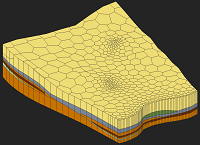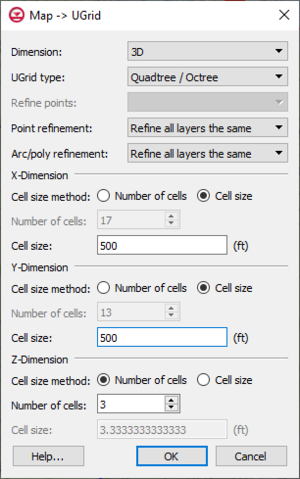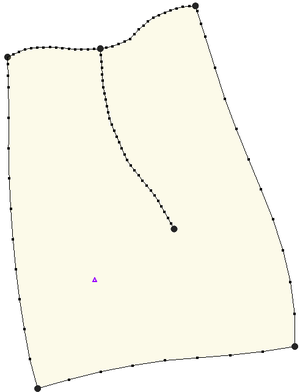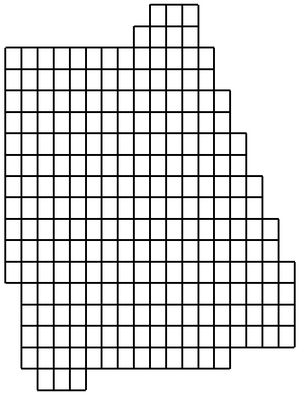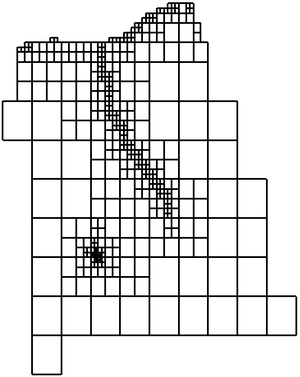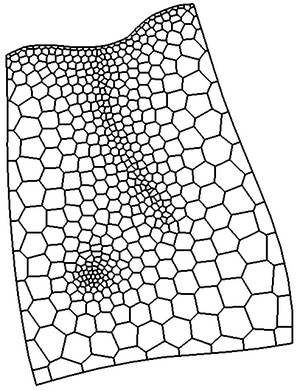GMS:Creating and Editing UGrids: Difference between revisions
From XMS Wiki
Jump to navigationJump to search
| Line 15: | Line 15: | ||
===Map → UGrid Dialog=== | ===Map → UGrid Dialog=== | ||
*Dimension – Specifies whether a 2D or 3D UGrid will be created. | *''Dimension'' – Specifies whether a 2D or 3D UGrid will be created. | ||
*UGrid type | *''UGrid type'' | ||
**Regular (not refined) – Creates a grid with rectangular cells that are not refined. Any refinement attributes specified on feature objects is ignored. | **''Regular (not refined)'' – Creates a grid with rectangular cells that are not refined. Any refinement attributes specified on feature objects is ignored. | ||
**Quad tree – Creates a grid with rectangular cells that are refined in a quad tree manner around any points, arcs and polygons which specify the refinement attribute and refinement size. | **''Quad tree'' – Creates a grid with rectangular cells that are refined in a quad tree manner around any points, arcs and polygons which specify the refinement attribute and refinement size. | ||
**Voronoi – Creates a Voronoi grid with cells of various sizes and shapes which meet the Voronoi criteria. Only the active coverage is used and it must contain a polygon because the algorithm uses the polygon to create a triangular mesh. The mesh is refined around points that are marked as refine points based on the specified refinement size. The mesh is constructed to honor all arc geometry. If refinement is specified as an attribute on arcs or polygons it is ignored. | **''Voronoi'' – Creates a Voronoi grid with cells of various sizes and shapes which meet the Voronoi criteria. Only the active coverage is used and it must contain a polygon because the algorithm uses the polygon to create a triangular mesh. The mesh is refined around points that are marked as refine points based on the specified refinement size. The mesh is constructed to honor all arc geometry. If refinement is specified as an attribute on arcs or polygons it is ignored. | ||
*Refine points – If the quad tree option is selected and refine points exist in multiple coverages, specifies which refine points to use. | *''Refine points'' – If the quad tree option is selected and refine points exist in multiple coverages, specifies which refine points to use. | ||
*X, Y, Z number of cells | *''X, Y, Z number of cells'' | ||
** If not using the Voronoi UGrid type, the size and number of cells in the X, Y and Z dimensions can be specified. For quad tree UGrids, the cell size represents the large, unrefined size. The small, refined size is determined by the refinement specified at points, arcs and polygons. Also for quad tree UGrids, if the cell size is specified, it represents a target cell size (large, unrefined size); the actual cell size will likely be somewhat different so that the cells fit within the grid boundaries. | ** If not using the Voronoi UGrid type, the size and number of cells in the X, Y and Z dimensions can be specified. For quad tree UGrids, the cell size represents the large, unrefined size. The small, refined size is determined by the refinement specified at points, arcs and polygons. Also for quad tree UGrids, if the cell size is specified, it represents a target cell size (large, unrefined size); the actual cell size will likely be somewhat different so that the cells fit within the grid boundaries. | ||
